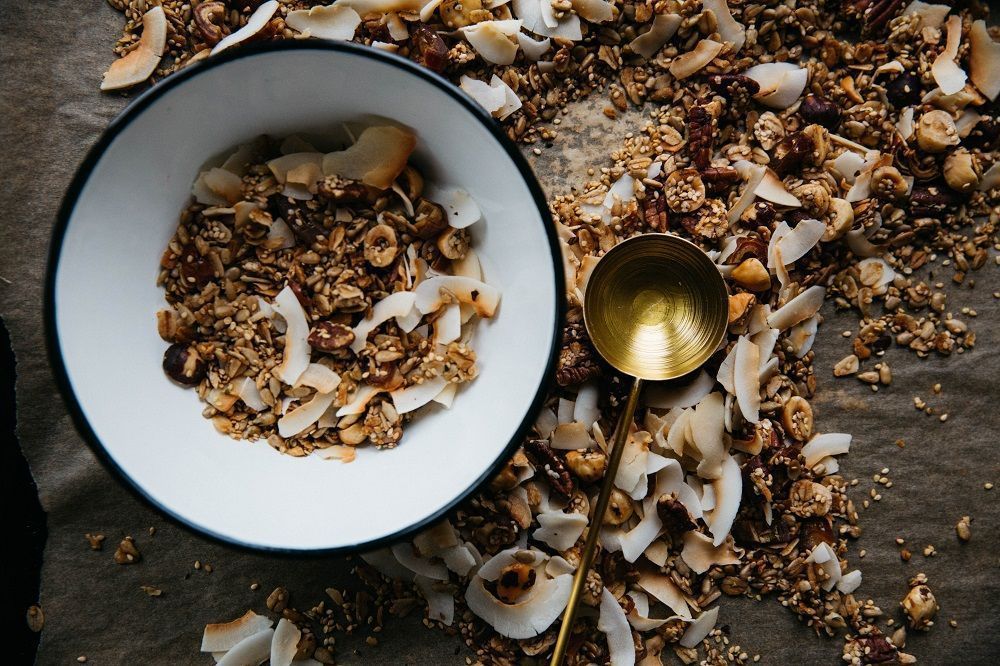
These days, it’s nearly impossible to talk about health without bringing up the gut. And that makes perfect sense; Your gut, also known as your digestive tract or GI tract, is home to 100 trillion microorganisms that are linked to myriad aspects of health, including immunity and cognitive function. People are constantly discussing how to heal their gut, especially on social media.
But exactly how can you “heal your gut” — and is it even necessary? Ahead, get the basics on gut healing, plus signs it’s something you should do.
What it means to have a healthy gut

First, it’s important to clarify what it means (and doesn’t mean) to “heal your gut.” “On the web, ‘healing your gut’ is a generalised concept that refers to optimising your gut health, with or without symptoms,” explains Matthew Bechtold, M.D., gastroenterologist at the University of Missouri. “Healing your gut” is not a medical phrase, but more of a marketing term, he adds. “The concept focuses on things that make your gut perform at its best, such as hydration and exercise,” according to Dr. Bechtold. With that in mind, a more accurate term would be “optimising” your gut, he says.
Registered dietitian Lisa Young, PhD, R.D.N., echoes this notion, adding that the phrasing “healing your gut” is not rooted in science and is a rather vague term. Case in point: Someone might say their gut needs “healing” if they have any number of different digestive issues, ranging from general stomach discomfort (caused by stress or poor eating habits, for example) to medical conditions (such as irritable bowel syndrome, aka IBS or small intestinal bacterial overgrowth, aka SIBO).
Additionally, “gut healing” is often dubbed as the solution for a “leaky gut,” a term that refers to intestinal permeability, according to a 2019 article in the journal Gut. A quick bio lesson: The GI tract has a lining that acts as a barrier, which regulates which substances are absorbed into the bloodstream, according to Harvard Health Publishing. However, in an unhealthy gut, the lining might have cracks or gaps, causing increased permeability. This might allow toxins, bacteria, and other substances to move out from the gut and into the bloodstream. The result is a “leaky gut,” which may be linked to inflammation and gut bacteria changes, according to Harvard Health Publishing.
But as with all areas of health, context is key. For starters, the gut is supposed to be semi-permeable; this is what allows nutrients from the food you eat to enter your bloodstream, according to a 2020 article in the journal Nutrients. “Leaky gut” is not a medical term, and while intestinal permeability definitely occurs, it may or may not be a disease in itself or a cause of other conditions, according to the Cleveland Clinic. And while there are GI barrier problems that can cause medical conditions (think: celiac or Chron’s disease), digestive issues don’t automatically mean you have anything that needs treating or “healing.”
How to heal your gut
If you suspect you have a medical condition, your best bet is to visit a gastroenterologist for treatment. Otherwise, if you’re looking to generally support your gut health, these tips for how to “heal your gut” may help.
Get regular physical activity

In addition to relieving stress and promoting better sleep, staying active is one of the best things you can do for gut health. “Physical activity helps the gut by improving motility in the stomach and small [intestine],” shares Dr Bechtold. “With improved motility, [you’ll be] less likely to develop bloating, constipation, and heartburn.”
Stay hydrated
“Adequate hydration is important for overall gut health,” according to Dr Bechtold. After all, water is essential for many GI-related functions, including gut motility, nutrient absorption, and waste removal via bowel movements. The Academy of Nutrition and Dietetics states that women need 11.5 cups of water per day and men need 15.5 cups, which include H2O from food and drinks. But take note: Chugging a lot of water at once in the name of gut health can lead to bloating, says Dr Bechtold.
Limit highly-processed foods

Another “gut healing” habit is to limit ultra-processed foods, such as pre-made frozen meals or crackers. That’s because these items are often high in refined sugar, which may trigger or worsen inflammation in the gut, says Young. Whole, fresh foods such as fruits, vegetables, and whole grains have the opposite effect, as they’re high in antioxidants and anti-inflammatory nutrients, according to Young.
Focus on fibre
When it comes to foods that “heal” your gut, go for high-fibre eats such as fruits, vegetables, legumes, and whole grains. For starters, fibre promotes the growth of beneficial gut bacteria, says Young. The nutrient also supports regular bowel movements and increases stool bulk, which can make number two more comfortable, according to the Mayo Clinic. The recommended daily intake of fibre is 25 and 38 grams for women and men, respectively.
Get enough sleep
A solid sleep routine is crucial for keeping your gut in check. Poor sleep habits can lead to an imbalance of gut bacteria, potentially contributing to inflammation and gut issues, according to Young. This effect may be linked to the brain-gut-microbiome axis, the communication system between the gut and brain, according to a 2021 article in the journal of Sleep Medicine. Aim to get the commonly-recommended seven to nine hours of sleep per night.
Signs you need to heal your gut

To reiterate, the popular definition of “healing” your gut involves generally supporting your gut function via healthy lifestyle habits.
Some clues that you might benefit from these lifestyle changes include abdominal discomfort (i.e., bloating) and changes in bowel habits, such as constipation and diarrhoea, says Dr Bechtold. These issues are often linked to lifestyle factors, including stress, poor diet, and lack of exercise, according to a 2021 article in the Frontiers of Endocrinology. But of course, you don’t need to wait until these GI symptoms appear to start optimising your gut. “Ideally, you’d help your gut before these symptoms develop,” notes Dr Bechtold.
By contrast, if you do have a medical disease that affects the gut, the “gut healing” habits mentioned above won’t ease your symptoms, says Dr Bechtold. Examples of such conditions include celiac disease, peptic ulcer disease, pancreatitis, esophagitis, Chron’s disease, and an H. pylori infection, according to Dr Bechtold.
If you’re unsure if a medical condition is at play, keep an eye out for the following symptoms, which are known as “red flags” by doctors, according to Dr Bechtold. “These are symptoms that [might] indicate something more is going on in the gut that hydration and physical activity may not fix,” he explains.
- Unintentional weight loss
- Change in stool habits (new diarrhoea or constipation)
- Change in stool diameter (such as pencil-thin stools)
- Blood in the stool
- Black stools
- Abdominal discomfort or bloating
- New heartburn
- Increase in food intolerances
When in doubt, listen to your gut (literally) and check in with a medical professional anytime you’re concerned about digestive symptoms. Even if the issues are due to lifestyle habits, they can point you in the right direction to get your GI tract back on track.
(Credit for Hero and Feature Image: Stocksy)
This story first appeared on www.shape.com.
© 2021 Meredith Corporation. All rights reserved. Licensed from Shape.com and published with permission of Meredith Corporation. Reproduction in any manner in any language in whole or in part without prior written permission is prohibited.
Shape and the Shape Logo are registered trademarks of Meredith Corporation. Used under License.
Subscribe to our newsletter to get the latest updates.
You’re all set
Thank you for your subscription.




